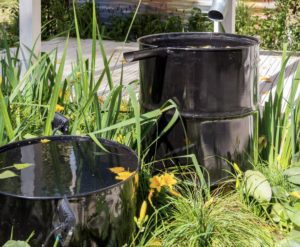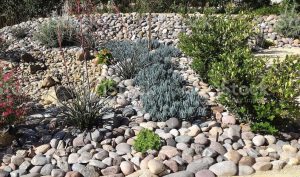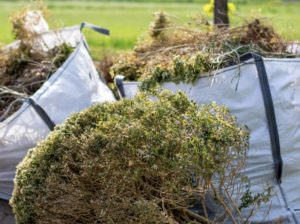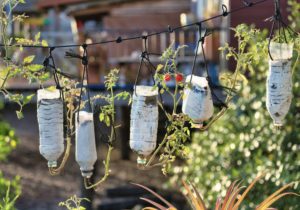In a world grappling with environmental challenges, creating eco-friendly practices in all aspects of our lives is crucial. One area where we can make a significant impact is in our gardens. Sustainable landscaping helps preserve the environment and creates a beautiful and vibrant space for you to enjoy. This guide explores sustainable landscaping principles, focusing on native plants, water conservation, and recycling. Get ready to transform your garden into an eco-friendly haven!
1. Embrace Native Plants:
When designing your sustainable garden, prioritize native plants over exotic species. Native plants are well-suited to the local climate and require minimal maintenance, making them ideal for water conservation and reducing the need for pesticides. They also provide crucial habitats for local wildlife. Consider including plants like lavender, yarrow, and California poppies in your garden, depending on your region. By choosing native plants, you’ll create a thriving ecosystem while reducing your environmental footprint.

2. Case Study: The California Poppy
In California, many gardeners have embraced the vibrant orange blossoms of the California poppy (Eschscholzia californica) in their sustainable landscapes. This native wildflower requires little water and grows easily in arid conditions, making it a perfect choice for water-wise gardening. Its cheerful flowers not only attract pollinators but also serve as a symbol of California’s commitment to sustainability.

3.Conserve Water:
Water is a precious resource; incorporating water conservation techniques in your garden can make a significant difference. Here are a few practical tips:
- Install a Rainwater Harvesting System: Collect rainwater from rooftops in barrels or tanks, and use it to irrigate your plants during dry spells. This not only reduces your reliance on freshwater but also prevents stormwater runoff.
- Drip Irrigation: Use drip irrigation systems that deliver water directly to plant roots, minimizing evaporation and ensuring efficient water use.
- Mulching: Apply a layer of organic mulch around plants to retain moisture, suppress weeds, and regulate soil temperature.

4. Case Study: Xeriscaping in Arizona
In the arid landscapes of Arizona, many homeowners have embraced xeriscaping, a water-efficient landscaping approach. By incorporating native desert plants, gravel, and rock features, these gardens require minimal water and thrive even in the most challenging conditions. Xeriscaping not only reduces water usage but also celebrates the unique beauty of the desert environment.

5. Practice Recycling and Composting:
Recycling and composting are essential components of sustainable landscaping by Reusingterials and creating nutrient-rich comcompost’llnimize waste and nurture your garden naturally.
- Recycled Materials: Incorporate recycled materials such as reclaimed wood, stone, or concrete into your garden design. Repurposing old items like pallets or containers adds character while reducing the demand for new resources.
- Composting: Start a compost pile using kitchen scraps, yard waste, and fallen leaves. Compost enriches the soil, promotes healthy plant growth, and reduces the need for synthetic fertilizers.

Case Study: The Upcycled Garden
Innovative gardeners around the world have turned discarded items into stunning garden features. Upcycling adds a unique touch to your eco-friendly garden, from repurposing old bathtubs as planters to transforming wine bottles into creative borders. Not only does it reduce waste, but it also showcases your creativity and commitment to sustainability.
By implementing sustainable landscaping practices, you can create a garden that is not only visually appealing but also environmentally friendly. Native plants, water conservation techniques, and recycling are essential components of an eco-friendly garden. By embracing these principles, you’ll reduce water usage, conserve resources and create a thriving habitat for local wildlife. The case studies highlighted in this guide demonstrate how sustainable landscaping can be successfully applied in different regions, showcasing the beauty and practicality of eco-friendly garden design.
As you embark on your sustainable landscaping journey, remember to research and select native plants that are best suited to your region’s climate and soil conditions. To ensure efficient water usage, incorporated-conserving techniques such as rainwater harvesting, drip irrigation, and mulching to embrace recycling and composting as a means to reduce waste and provide natural nutrients for your garden.
Beyond the environmental benefits, an eco-friendly garden also offers a tranquil and rejuvenating space for you to connect with nature. Imagine the sound of birdsong, the fragrance of blooming flowers, and the joy of watching butterflies fluttering among native plants. By prioritizing sustainability in your garden, you become a steward of the environment, positively impacting your immediate surroundings and inspiring others to follow suit.
So, let your garden become a testament to your commitment to sustainable living. Start small, and expand your efforts as you witness the positive results. Share your experiences and knowledge with fellow gardening enthusiasts, and together, we can transform our gardens into havens that support biodiversity, conserve resources, and inspire a greener future.
Remember, every eco-friendly garden counts. Let your sustainable landscaping journey begin today!